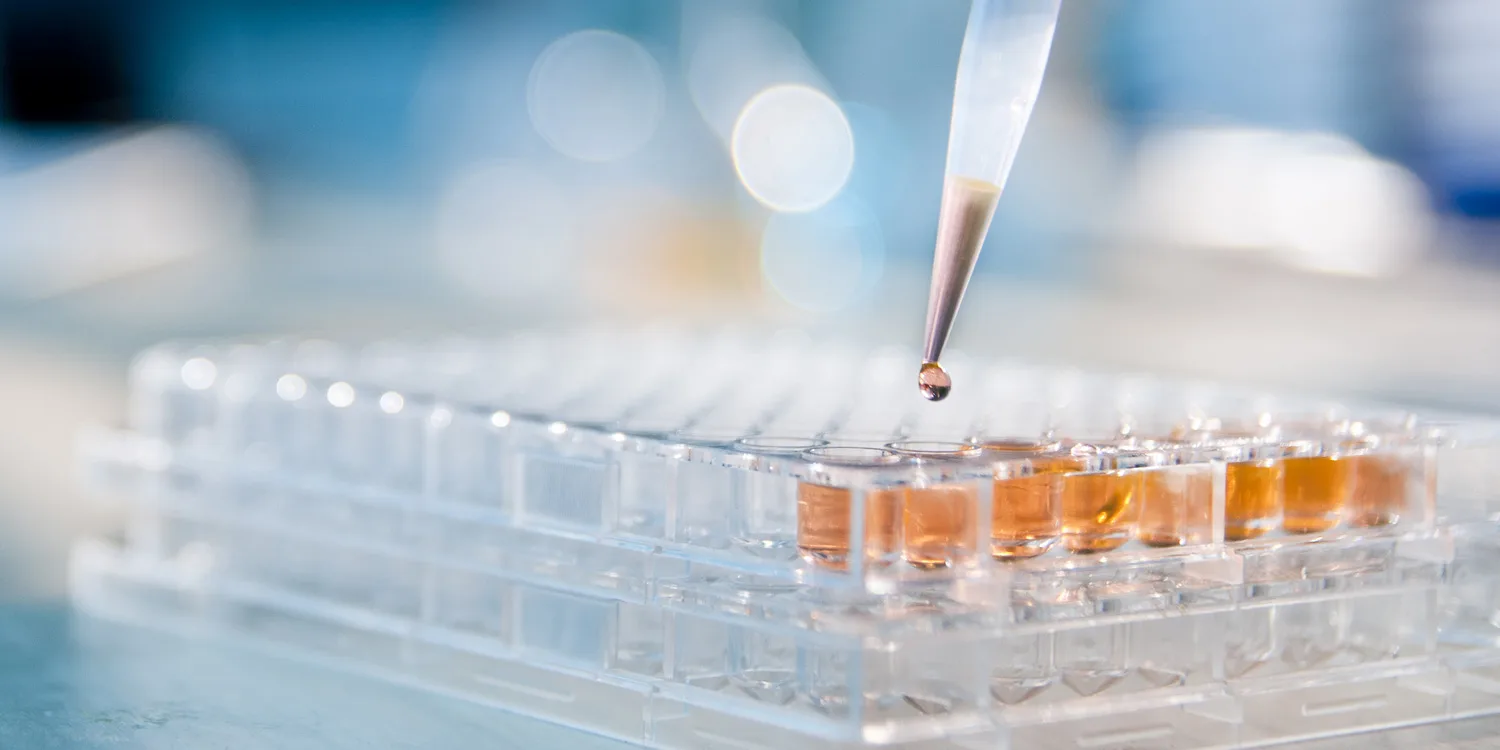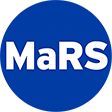Why liquid biopsies may be a game-changer for cancer care
By Carol Toller | October 29, 2025

Non-invasive techniques to detect and monitor tumours without the discomfort of conventional biopsies could transform lives and improve outcomes.
In the cancer world, biopsies have long been considered a necessary evil. The cell and tissue samples collected through the procedure provide critical information about potentially cancerous tumours. But extracting those samples from areas of concern can be uncomfortable, and almost always involves a trip to the hospital.
In late-stage cases, when the disease has spread to the bones, biopsies can be incredibly painful, says Dr. Stuart Edmonds, executive vice president of mission, research and advocacy at the Canadian Cancer Society. Although these procedures can take a heavy toll on patients, he adds, “they help doctors understand cancers better, so they’re an important tool in oncology.”
But what if there were a non-invasive way to detect and monitor cancer? And what if that method enabled doctors to make diagnoses earlier and begin treatments sooner? The answer might be the liquid biopsy, which identifies signs of cancer by scanning for disease-signalling “biomarkers” in a simple blood sample.
New screening tools based on this technique are showing promising results, Edmonds says, adding that “many health centres in Canada now offer liquid biopsy as part of cancer diagnosis and care.” Relatively cheap and easy to administer with minimal discomfort for patients, liquid biopsies could be revolutionary for people with cancer — especially those who have lung, ovarian or other deadly types of cancer that are often detected too late to effectively treat.
“Many cancers have subtle or no symptoms at first, which can make early detection a challenge,” Edmonds says. “Safe, affordable tests that can signal the presence of cancer allow us to easily rule it in or out without putting undue pressure on the person or the healthcare system.”
As the name suggests, liquid biopsies collect bodily fluids — usually blood, though for some cancers, urine or saliva are used — and assess these samples for the presence of biomarkers such as cells, DNA fragments and proteins that are shed by growing tumours. These markers offer a wealth of information that can be used to diagnose and monitor disease, says Dr. Peter Jianrui Liu, the co-founder and CEO of Oxford Cancer Analytics (OXcan), a company based in Toronto and the United Kingdom that has developed a blood test for lung cancer it hopes to deploy in North America by 2026.
Liu set his sights on lung cancer because it has the highest mortality rate of any cancer in Canada, accounting for more than 20,000 deaths each year. Early detection is key to treatment, but since lung cancer is typically asymptomatic in stages I and II, it’s rarely detected until stage III, when it has entered the lymph notes, or stage IV, when it’s spread to other parts of the body. Liu, who’s a physician and molecular biologist, was motivated to identify early-stage biomarkers in the bloodstream after experiencing cancer-related loss in his family. But he and his team had to find the right ones.
Other researchers had attempted to detect early-stage lung cancer by analyzing DNA fragments in the blood, but the results had proven inconclusive, possibly because tumours shed less DNA in the initial stages of cancer (smaller tumours have fewer cells and ergo release fewer cells). Liu opted to examine proteins, which can provide detailed insights that help pinpoint lung cancer biomarkers, he says.
Assisted by machine learning technology, Liu and his researchers examined more than 5,000 kinds of proteins and identified 20 that indicate risks of lung cancer. Based on that data analysis, the team developed a blood test that detects these biomarkers with more than 90 percent accuracy, says Liu, who finds additional meaning in his personal connection to this work. “I like to think that this legacy lives on in what I do,” he says.
In addition to saving lives, early detection cuts costs for the healthcare system, Liu notes, since late-stage treatments cost considerably more than early interventions. The lung cancer test is only a first step for OxCan. The company hopes to identify biomarkers for other cancers as well. Liu says this technology could also be used to detect other conditions, including autoimmune disorders and cardiovascular disease. “There’s potential to go broader with this, and help more people.”
Early detection isn’t the only advantage of liquid biopsies. They could also be a game-changer for late-stage cancer treatment by enabling doctors to closely monitor tumour growth and shrinkage and quickly course-correct when a treatment isn’t working. Oncologists typically require tissue biopsies and scans to track late-stage cancers, but these are usually administered infrequently, because they require visits to cancer centres and hospitals and can be costly for the health care system. Some procedures, like the CT scans used to monitor metastatic breast cancer, also expose patients to radiation.
Blood samples, on the other hand, can be collected by a family physician or a local medical lab, points out Dr. Irsa Wiginton, the business development officer at mDETECT. The Kingston, Ont.-based company, which Wiginton co-founded with Dr. Christopher Mueller in 2022, is developing a solution to help doctors monitor the 10 cancers with the highest mortality rates: lung, pancreatic, ovarian, breast, kidney, bladder, liver, prostate, colorectal and melanoma. mDETECT’s liquid biopsy blood tests analyze DNA fragments, which are more abundant in the bloodstream in late-stage cancers, to determine whether tumours are shrinking or growing.
Because liquid biopsy processes are relatively inexpensive — mDETECT’s lung cancer test costs about $500 — care providers dealing with limited budgets can administer them more often, effectively providing real-time feedback that enables doctors to measure how patients are responding to treatments. So if immunotherapy, which costs about $150,000 per year, isn’t proving effective, oncologists can alter the plan without wasting resources or valuable time on a grueling treatment that isn’t working.
“What these tests do is offer timeliness and options,” says Mueller, a senior scientist and professor at Queen’s University’s Sinclair Cancer Research Institute and principal investigator in the Queen’s lab that developed the test.
Eventually, mDETECT plans to “work its way back” and develop liquid biopsy tests geared toward early detection of key cancers (such as ovarian, lung and pancreatic) as well. “It’s an approach that can really change how cancer is treated,” he says. That’s especially true in rural and remote areas, where patients often struggle to access treatment, Wiginton adds.
While OxCan and mDETECT are working on tests that target individual cancers, other companies, like Toronto-based Adela, hope to develop liquid biopsies that can screen for multiple cancers at once. Theoretically, at least, that means cancer screening could be conducted in family practices and medical labs. One possible downside, notes Edmonds, is the potential for false positives, which can be stressful for patients and taxing for oncologists and cancer centres. But ultimately, he says, these advancements are helping usher in a new era for cancer treatment, one that allows doctors to proactively treat disease and tailor therapies to individual patients.
“We’re going to have amazing information,” he says with audible enthusiasm. The power of molecular testing, combined with improvements in medical imaging and advances in AI and machine-learning technology, could radically increase the effectiveness of prognostics and therapies.
“Institutions have invested a lot of money into cancer research, and we’re at a point now where we’re starting to see that research make it into the clinic,” Dr. Edmonds says. “I’m very optimistic about the future of cancer detection and treatment that improves cancer outcomes.”
Image source: iStock
 Carol Toller
Carol Toller